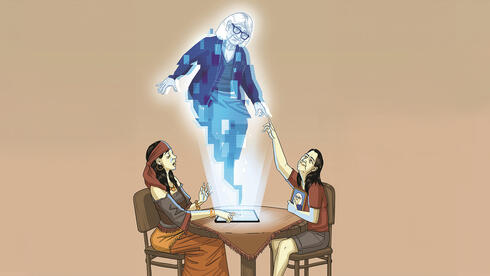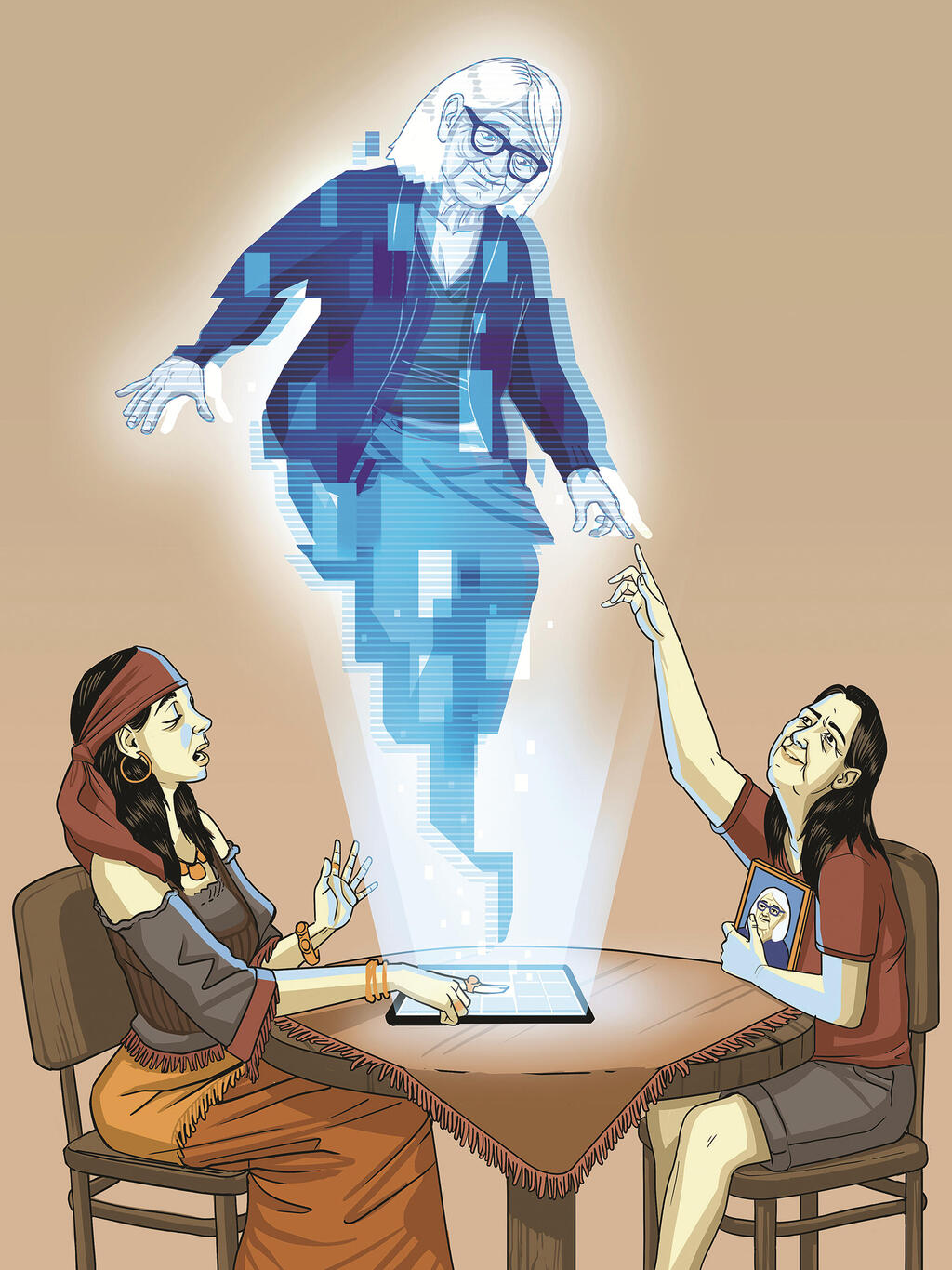The rise of deathbots: When grief meets artificial intelligence | CTech
作者:Viki Auslender
AI avatars of the deceased are reshaping mourning—and raising new ethical, psychological, and economic questions.
A strange new industry is quietly taking shape at the intersection of artificial intelligence and digital memory: the "death chatbot" industry, also known as Deathbots or Ghostbots. This emerging sector – balancing precariously between innovation and morbidity – has already earned labels such as "death capitalism," "the digital afterlife industry," and "Grief Tech." These companies promise that, for a nominal fee (and sometimes even free of charge), users can feed an algorithm with text messages, emails, voice recordings, videos, and personal diaries – and receive back interactive avatars of their deceased loved ones.
The roots of the industry were planted nearly a decade ago, but the rapid advancement of generative AI has supercharged its growth. With that acceleration come deeper ethical, psychological, and philosophical questions: Does preserving a digital "ghost" of the dead help with grieving, or hinder it? For some, it offers comfort and continued connection. For others, it risks dehumanizing the deceased, blurring the line between memory and simulation, and threatening the boundaries of consent and ownership.
These questions go further still: Are our relationships with the dead changing? Is interacting with a digital replica of a loved one meaningful or merely illusionary? Not so long ago, most people didn't even have photographs of deceased relatives. Today, we can reconstruct a lifelike persona from a digital footprint—and even enhance it based on the family's wishes.
The list of services is growing. Project December, which emerged in 2020 after users hacked the GPT-2 model to simulate loved ones, now offers "conversations with the dead" for $10. Seance AI offers ghost versions for free, with voice versions for paid subscribers. HereAfter AI allows users to pre-record their own chatbot. StoryFile Life builds realistic avatars from recorded video interviews.
"What's so enticing about this industry," says Dr. Paula Kiel of NYU-London, "is that, like every generation, we're looking for ways to preserve parts of ourselves. We're finding solace in the inevitability of death through the language of science and technology."
Technically, these bots rely on machine learning algorithms trained on personal content – letters, emails, text messages, and diaries – to replicate not only a subject's interests but their speech patterns, quirks, and voice. With the use of voice cloning and deepfake technology, these avatars can now sound and look increasingly human.
But the emotional outcomes vary widely. For one user, the chatbot might aid in processing grief; for another, it may serve as a surrogate for the deceased and deepen emotional dependency. Science fiction has long explored such scenarios. In the TV series "Black Mirror," the episode "Be Right Back" tells the story of a grieving woman who orders a chatbot version of her deceased partner, ultimately losing her grip on reality.
The psychological risks are well documented. As early as 1966, MIT computer scientist Joseph Weizenbaum discovered that users of his basic chatbot, ELIZA, attributed intelligence and emotion to the bot. His conclusion – that bots can induce "delusional thinking in perfectly normal people" – remains foundational in human-computer interaction research.
"There are platforms that allow for intermediate steps," says Dr. Tal Morse, a lecturer at the Jerusalem Multidisciplinary Academic Center and a research fellow at the University of Bath's Centre for Death and Society. "Some offer a digital vault to send messages posthumously, like a grandfather scheduling a message for his grandson's wedding. That option is easier to accept—it lets people control the message, recipient, and timing."
Dr. Kiel adds: "People often avoid these technologies for the same reason they avoid writing a will. They may think it’s a good idea, but they’re reluctant to confront their own mortality."
The implications go beyond momentary comfort. Digital ghosts may provide an "emotional bridge," or they may complicate the mourning process. "The idea of symbolic immortality is old," says Kiel, "but when someone else creates that voice for you, you can't shape the memory on your own. It may not hold long-term emotional value."
Critics argue that these avatars represent an extreme form of death denial and warn of emotional harm. Vulnerable users may confuse the bot with the real person. Others warn that grief is being pathologized and monetized. Developers, Kiel says, often can't answer basic questions: "What if I want to access this memory in 80 years? Will it reach the right person? Will the system still exist?"
This is not just a technological debate, but a cultural and existential one. Can AI truly preserve a loved one's essence? Or is it a commercially driven illusion that exploits grief?
The economic potential is enormous. Tech companies are already turning death into a market category. The risk, critics warn, is that even grief might be turned into a product, with "caring features" marketed as premium services, creating emotional and financial dependencies.
"Whether technology will disrupt the essence of death is still unclear," says Dr. Morse, "but it’s certainly changing the way we relate to it. The dead aren’t as silent as they used to be. They're on social media, they appear in feeds and birthday reminders. Death is no longer hidden—it's embedded in daily digital life."
关于《The rise of deathbots: When grief meets artificial intelligence | CTech》的评论
暂无评论


